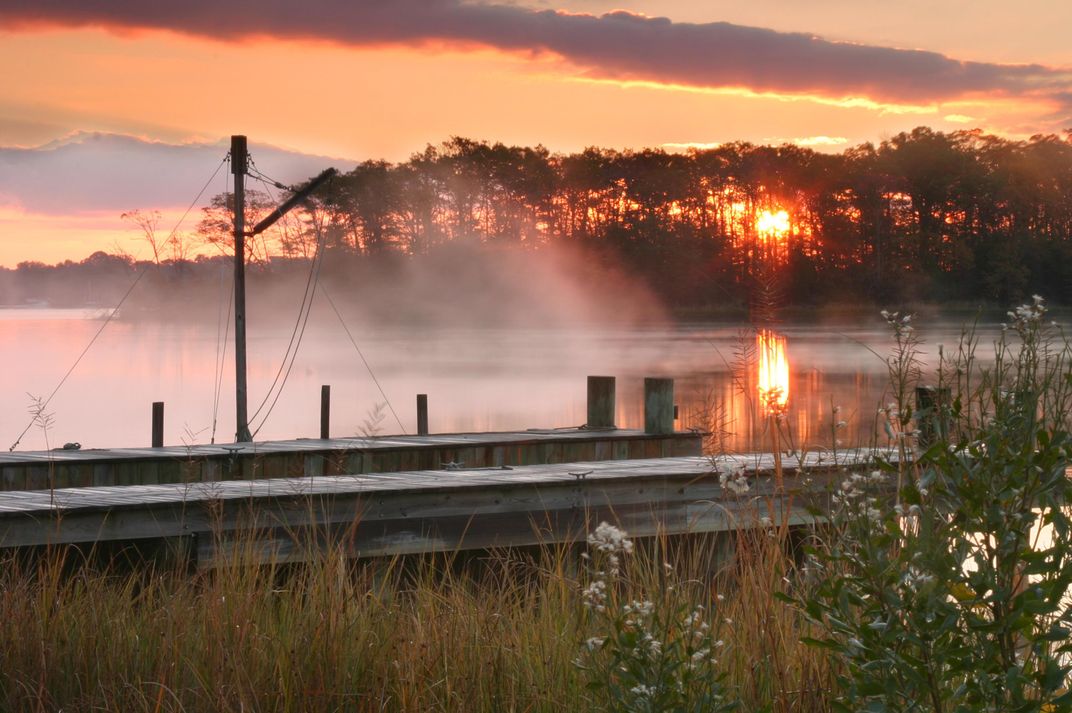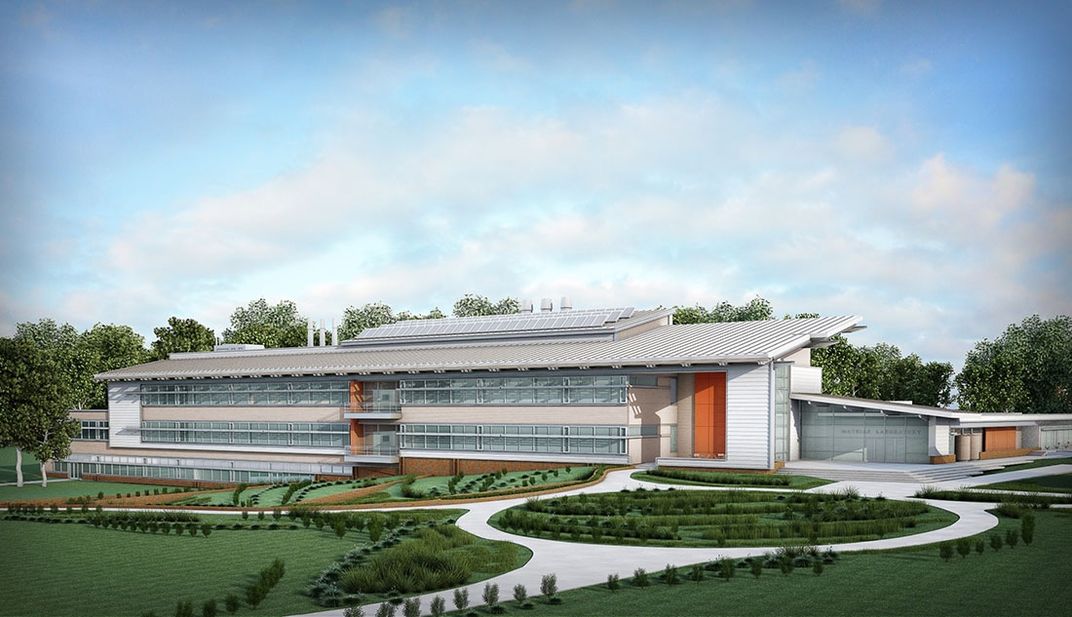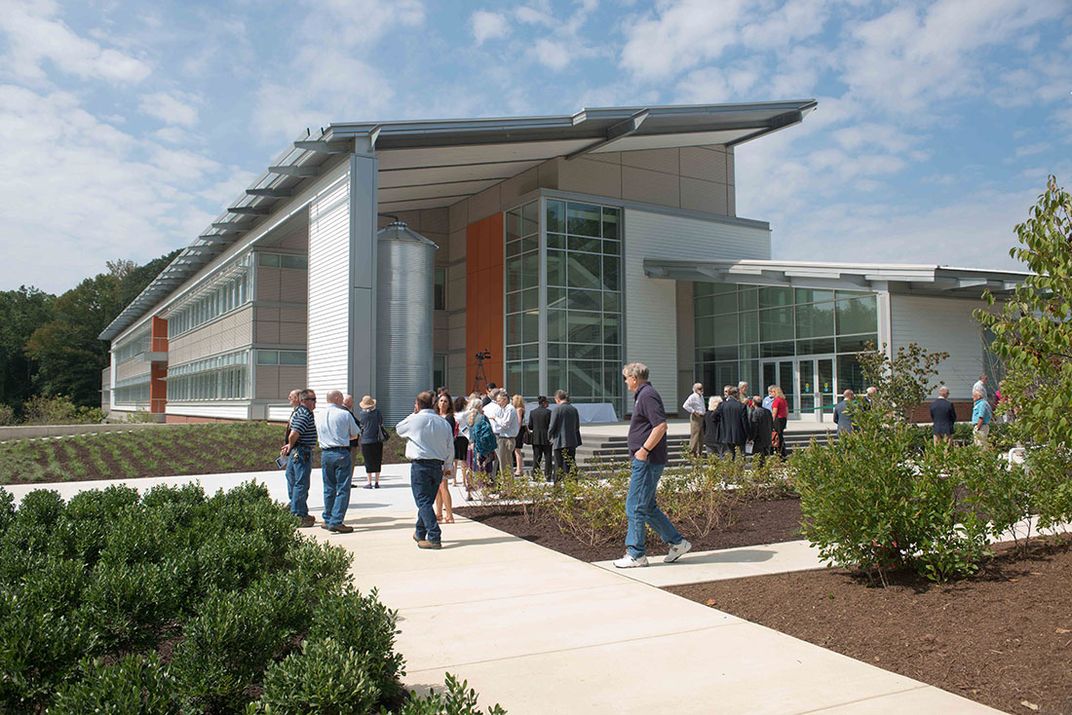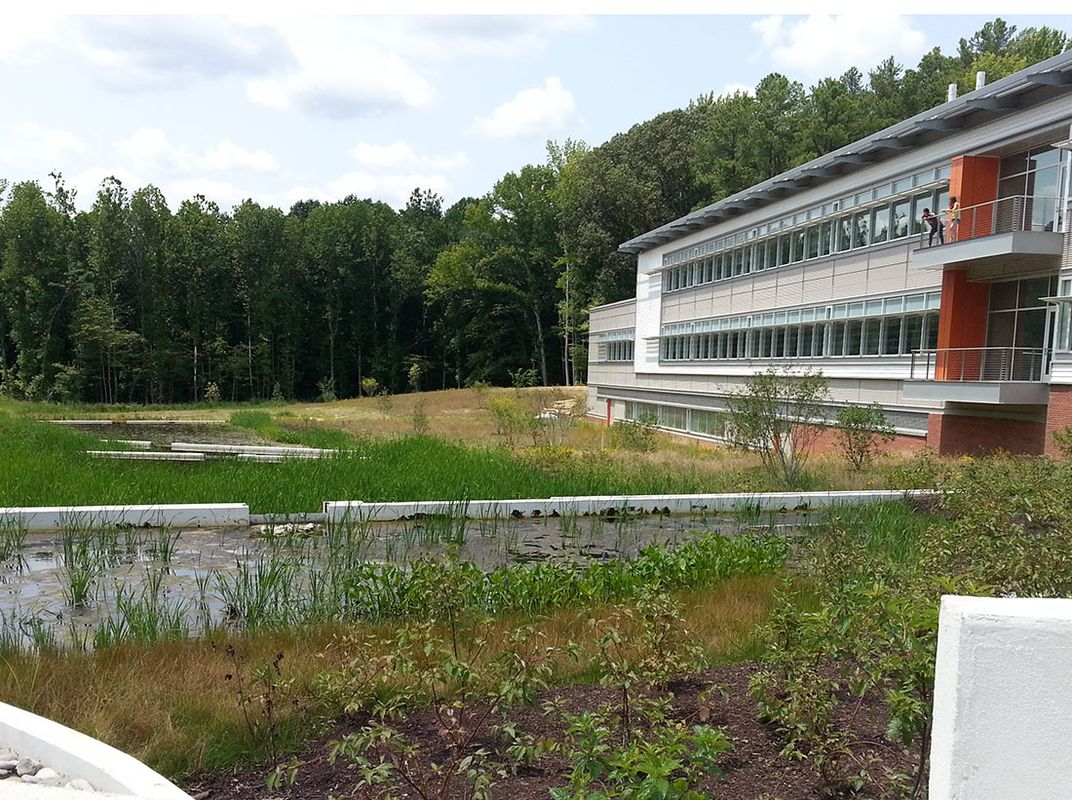A New Environmental Science Lab Now Walks the Walk, Cutting Its Overall Emissions by 37 Percent
With geothermal heating, on-site water reclamation and a host of other energy saving technologies, the Smithsonian’s first LEED-Platinum building opens
The concept is simple, a place where people study climate change and human impacts on the environment should consume as few resources and emit as little carbon as possible. Turning concept into reality, however, is anything but simple.
At the Smithsonian Environmental Research Center’s (SERC) new laboratory building in Edgewater, Maryland, on the Chesapeake Bay, it took 250 geothermal wells and 1,020 solar panels just to get started. Additional technology was incorporated to reduce the energy demands of the 69,000 square foot space, and a whole system had to be built around recycling all the water used by 15 different lab units. When SERC’s Charles McC. Mathias lab opened this fall, it became the first Smithsonian building to achieve LEED Platinum standards–the highest sustainability rating from the U.S. Green Building Council (USGBC).
But it hasn’t been easy going green. “It’s actually quite a remarkable achievement,” says Scot Horst, Chief Product Officer of the USGBC, “Especially for a lab.” Scientific research labs are major energy hogs that can consume four times more electricity than most other buildings. The specialized equipment is partly to blame. Walk-in refrigerators keep experiments at just the right temperature. Special ovens dry specimens. High powered lights simulate solar radiation.
“A lab also presents unique challenges because there’s so much air exchange in the laboratory itself,” says Horst. Exhaust hoods in every lab room are continually venting air that’s been heated or cooled to room temperature. “You can’t re-circulate the air that’s coming off the hood.” That’s just energy thrown out the window.
So, “green” labs like SERC’s Mathias lab (named for former U.S. Senator Charles "Mac" Mathias, Jr., a leading proponent of the Chesapeake Bay Program) have to find creative ways to save energy and reduce consumption. Motion sensors in each lab slow the fans on exhaust hoods or ramp them up depending on whether or not the lab is occupied. But the key to conservation is integrating all the parts to re-use every resource possible. In order to reduce energy loss from exhausted air, a ceramic heat exchanger called an enthalpy tempers fresh air entering the building by exchanging heat with room temperature air flowing out through the exhaust system.
The new lab also gets double duty out of its geothermal system. As in all geothermal systems, SERC’s draws on the constant 55 degree temperature below ground to help cool the building in summer and heat it in winter. But in this case, the geothermal loop also pre-cools the refrigerated boxes and walk-ins to 55 degrees Fahrenheit, which makes it much easier for the compressors to do the rest.
On the water side, everything that goes into the building is used and used again. Water from lavatory sinks is filtered for reuse in toilets and the fire suppression system. The reverse osmosis system, which makes ultra-pure water for experiments is also looped into that same “gray water” system. In most labs, that’s one of the big water-wasters that other buildings don’t have to deal with. A reverse osmosis system yields about 30 gallons of ultra pure water for every 100 gallons of tap water. The rest is usually lost down the drain. When all that water is eventually flushed down the toilet, it goes to an on-site waste-water treatment plant for processing. Even that gets re-used again to nourish a four-and-a-half acre constructed wetland that provides habitat for wildlife. And, true to form, even that has a dual life as a storm water control feature.
“It’s not only collecting all the storm water from the building and other parts of the site,” says lead architect Howard Skoke of Ewing Cole, “but it’s managing the flow so it doesn’t flood, and it also creates controllable experimental wetland pools for the scientists and for education.”
“Campus-wide, we’ve cut our water use in half,” says Robert Gallagher, executive officer for SERC. “Before, our average consumption was between 7,500 and 8,000 gallons daily,” he said. “With the changes that we’ve made and the efficiencies that we’ve put in, we’re down below 4,000 gallons.”
Overall, the new building is estimated to result in 37 percent less CO2 emission and save 42 percent on energy costs compared to a traditionally built laboratory. Whatever the final numbers turn out to be, the new lab’s efficiency will far exceed that of the lab space it’s replacing. For more than a decade, most of SERC’s laboratories and offices were housed in aging FEMA trailers.
“You’re going to save the federal government money,” said Senator Ben Cardin at the opening. “Forty percent of our energy use in America comes out of our buildings,” Cardin said. “[Smithsonian is] showing how we can save energy and be more economically secure as a nation on energy conservation. You are showing that America leads by example and you’re giving us that example in the type of building you construct.”
The Smithsonian Environmental Research Center, located on the Rhode River of the Chesapeake Bay at 647 Contee Wharf Road in Edgewater, Maryland, is open to visitors Monday through Saturday from 9 to 4:30. Activities include lectures, childrens' activities and canoe and nature excursions. A Citizen Scientist program also invites volunteers to participate, aiding Smithsonian scientists, both in the laboratories and in the field.




